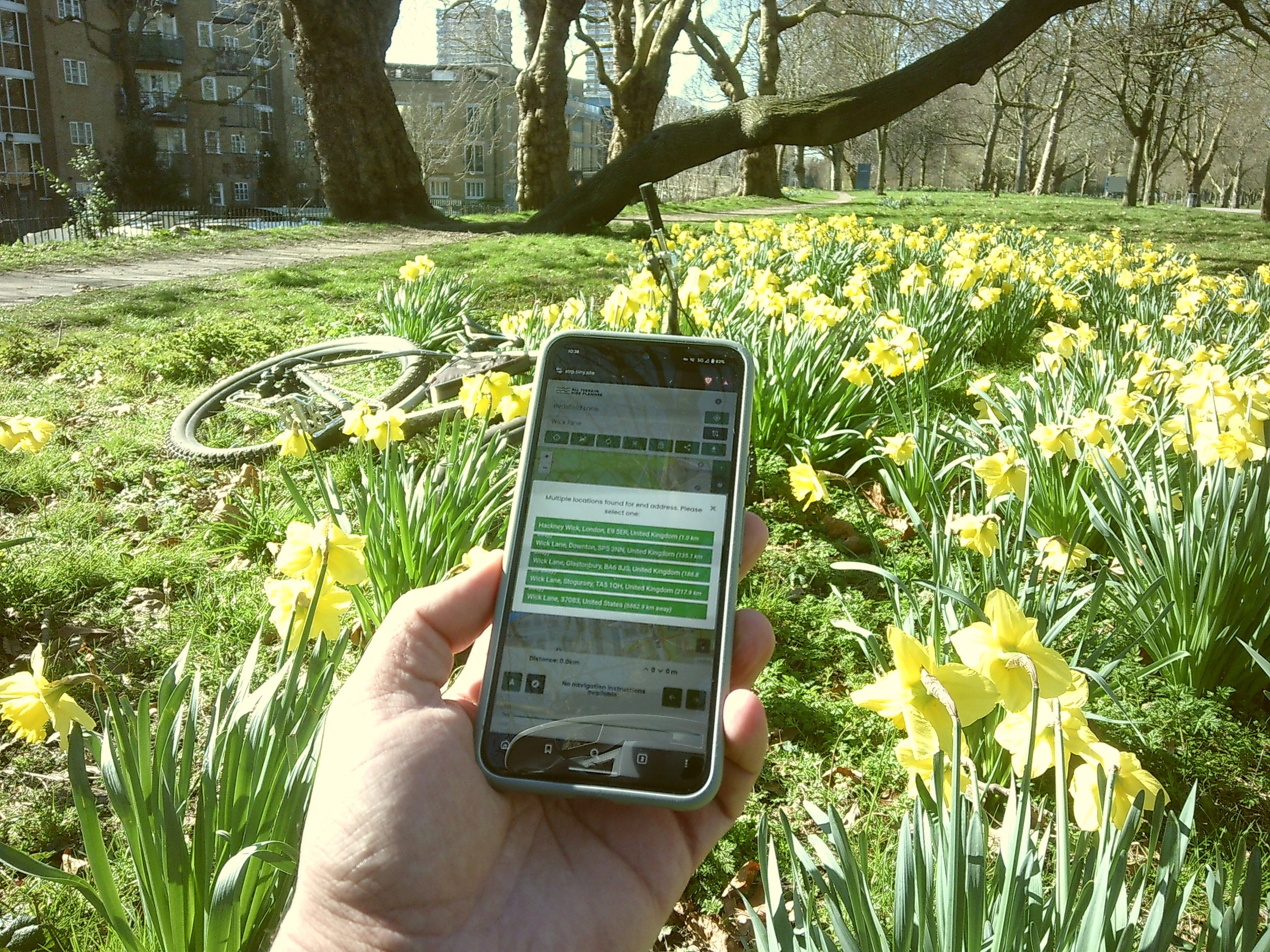All Terrain Ride Planner is a route-planning app for extra fun bike rides.
In case you didn’t know, I love bicycles. So, when I started thinking about using chat GPT to code a functional app, I knew I wanted to build something bike-related. I didn’t design or plan this; it grew organically as I learned.
The route calculation is custom. It tries to find the optimum route between waypoints but prefers dirt, trails, and quiet roads over the most direct route.
With it, you can create routes with multiple waypoints, view turn-by-turn directions, and see the elevation profile. You can add your start and end by typing in an address or pressing directly on the map. If you’re starting a route from your current location, you can get the app to drop a pin there and then choose your destination. It’s easy to add, delete and reorder waypoints or even reverse the route. It has real-time location tracking and the map rotates as you click through the directions.
You can even export a route as a GPX file for use with your favourite GPS device or share a route with your friends via a URL string that encodes the waypoints.




I started out building this by prompting Chat GPT and copying the code into Notepad. When I hit the rate limit, I would switch back and forth between Chat GPT and Microsoft Copilot. I realised early on that I would need to up my game, so here’s a timeline of my various setups
Chat GPT + Notepad
ChatGPT + Copilot + Notepad
ChatGPT + Copilot + Dreamweaver
VSCode + ChatGPT
VSCode + ChatGPT + Claude
Cursor + Claude + ChatGPT
The project got seriously complicated as I added features and broke stuff. I learned much about modules, refactoring, and KISS and DRY principles. I learned how precise you need to be with your words. How logically you need to think. The right questions to ask and how to lead the LLM to the right solution when it got stuck. But the number one thing I learned is that LLMs won’t replace a good dev team any time soon.
Early on, I had to figure out how to set up a Node.js server for local testing of the project so I could run Javascript, make the route sharing work, write to the filesystem, and access the browser’s location.
I negotiated a custom package and reduced pricing with Graphhopper for the use of their API, and I figured out some really stupid (and easy to hack) ways to hide API keys. I also found a super fun hosting solution called Tiiny.


